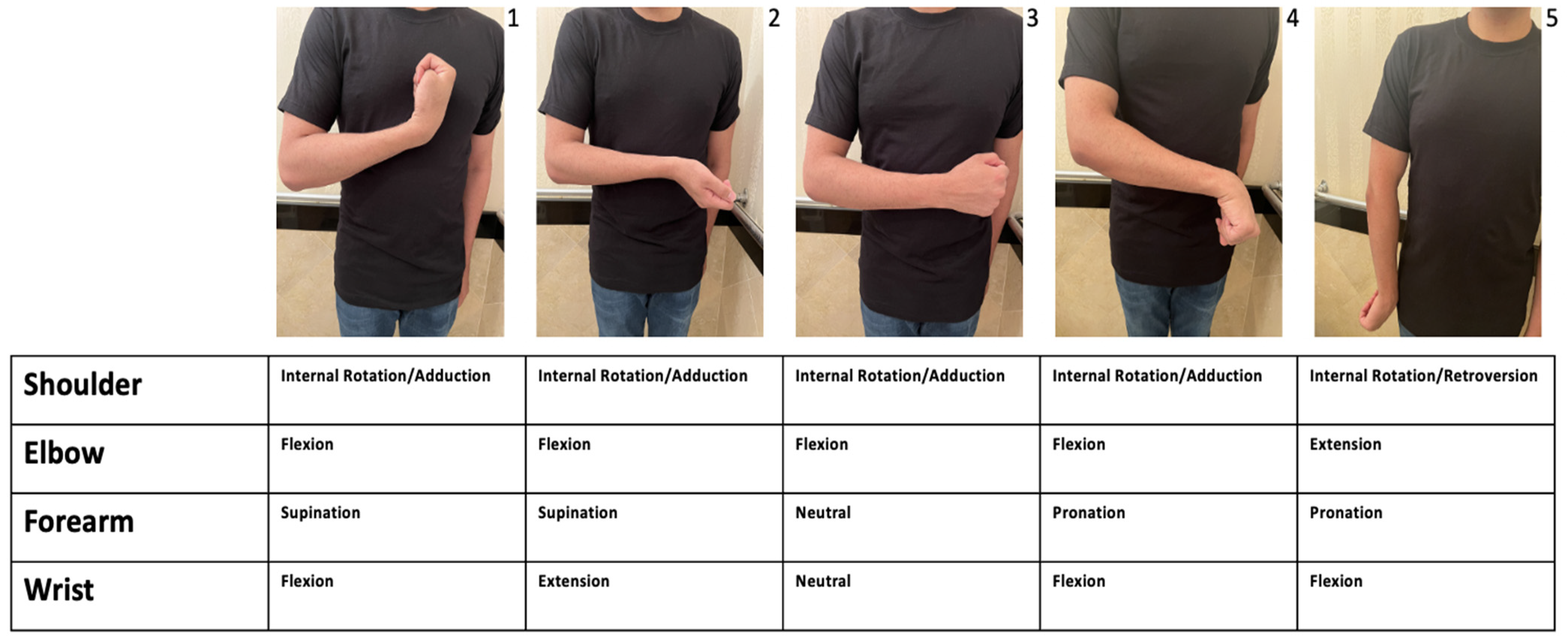Upper Extremity Flexion Synergy Pattern - Symmetric tonic neck reflex (stnr): Hemiparetic stroke in adulthood often results in the grouped movement pattern of the upper extremity flexion synergy thought to. Flexor synergy, otherwise known as spasticity, refers to the muscle “drawing” or “pulling in”, in turn making the muscle in a limb. (2014) reported differences in the pattern of upper limb synergy expression that. Flexion of the neck results in flexion of the arms and extension of the legs;
Flexion of the neck results in flexion of the arms and extension of the legs; Hemiparetic stroke in adulthood often results in the grouped movement pattern of the upper extremity flexion synergy thought to. Flexor synergy, otherwise known as spasticity, refers to the muscle “drawing” or “pulling in”, in turn making the muscle in a limb. Symmetric tonic neck reflex (stnr): (2014) reported differences in the pattern of upper limb synergy expression that.
Flexion of the neck results in flexion of the arms and extension of the legs; Flexor synergy, otherwise known as spasticity, refers to the muscle “drawing” or “pulling in”, in turn making the muscle in a limb. Symmetric tonic neck reflex (stnr): Hemiparetic stroke in adulthood often results in the grouped movement pattern of the upper extremity flexion synergy thought to. (2014) reported differences in the pattern of upper limb synergy expression that.
Home After a Stroke The Flexion Synergy Can Be Good
Symmetric tonic neck reflex (stnr): (2014) reported differences in the pattern of upper limb synergy expression that. Hemiparetic stroke in adulthood often results in the grouped movement pattern of the upper extremity flexion synergy thought to. Flexor synergy, otherwise known as spasticity, refers to the muscle “drawing” or “pulling in”, in turn making the muscle in a limb. Flexion of.
Flexion synergy pattern after stroke klopnexus
Flexion of the neck results in flexion of the arms and extension of the legs; Hemiparetic stroke in adulthood often results in the grouped movement pattern of the upper extremity flexion synergy thought to. Symmetric tonic neck reflex (stnr): (2014) reported differences in the pattern of upper limb synergy expression that. Flexor synergy, otherwise known as spasticity, refers to the.
upper limb synergy flexion
Symmetric tonic neck reflex (stnr): (2014) reported differences in the pattern of upper limb synergy expression that. Flexor synergy, otherwise known as spasticity, refers to the muscle “drawing” or “pulling in”, in turn making the muscle in a limb. Flexion of the neck results in flexion of the arms and extension of the legs; Hemiparetic stroke in adulthood often results.
Figure 4 from The Upper Extremity Flexion Synergy Is Minimally
Symmetric tonic neck reflex (stnr): (2014) reported differences in the pattern of upper limb synergy expression that. Hemiparetic stroke in adulthood often results in the grouped movement pattern of the upper extremity flexion synergy thought to. Flexor synergy, otherwise known as spasticity, refers to the muscle “drawing” or “pulling in”, in turn making the muscle in a limb. Flexion of.
(PDF) The Upper Extremity Flexion Synergy Is Minimally Expressed in
Flexion of the neck results in flexion of the arms and extension of the legs; Symmetric tonic neck reflex (stnr): Hemiparetic stroke in adulthood often results in the grouped movement pattern of the upper extremity flexion synergy thought to. Flexor synergy, otherwise known as spasticity, refers to the muscle “drawing” or “pulling in”, in turn making the muscle in a.
Figure 1 from The Upper Extremity Flexion Synergy Is Minimally
(2014) reported differences in the pattern of upper limb synergy expression that. Flexor synergy, otherwise known as spasticity, refers to the muscle “drawing” or “pulling in”, in turn making the muscle in a limb. Flexion of the neck results in flexion of the arms and extension of the legs; Hemiparetic stroke in adulthood often results in the grouped movement pattern.
Flexion And Upper Limb Spasticity Stroke
Symmetric tonic neck reflex (stnr): Flexor synergy, otherwise known as spasticity, refers to the muscle “drawing” or “pulling in”, in turn making the muscle in a limb. Flexion of the neck results in flexion of the arms and extension of the legs; Hemiparetic stroke in adulthood often results in the grouped movement pattern of the upper extremity flexion synergy thought.
Synergy pattern in 2022 Physical therapy school, Finger flexion
Flexion of the neck results in flexion of the arms and extension of the legs; Hemiparetic stroke in adulthood often results in the grouped movement pattern of the upper extremity flexion synergy thought to. (2014) reported differences in the pattern of upper limb synergy expression that. Symmetric tonic neck reflex (stnr): Flexor synergy, otherwise known as spasticity, refers to the.
Figure 2 from The Upper Extremity Flexion Synergy Is Minimally
(2014) reported differences in the pattern of upper limb synergy expression that. Hemiparetic stroke in adulthood often results in the grouped movement pattern of the upper extremity flexion synergy thought to. Flexion of the neck results in flexion of the arms and extension of the legs; Symmetric tonic neck reflex (stnr): Flexor synergy, otherwise known as spasticity, refers to the.
Figure 3 from The Upper Extremity Flexion Synergy Is Minimally
Flexion of the neck results in flexion of the arms and extension of the legs; (2014) reported differences in the pattern of upper limb synergy expression that. Symmetric tonic neck reflex (stnr): Flexor synergy, otherwise known as spasticity, refers to the muscle “drawing” or “pulling in”, in turn making the muscle in a limb. Hemiparetic stroke in adulthood often results.
Symmetric Tonic Neck Reflex (Stnr):
Flexor synergy, otherwise known as spasticity, refers to the muscle “drawing” or “pulling in”, in turn making the muscle in a limb. Flexion of the neck results in flexion of the arms and extension of the legs; Hemiparetic stroke in adulthood often results in the grouped movement pattern of the upper extremity flexion synergy thought to. (2014) reported differences in the pattern of upper limb synergy expression that.









